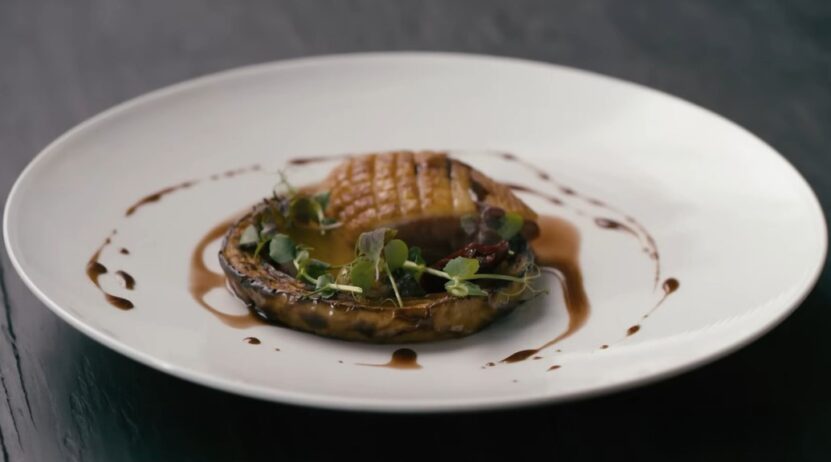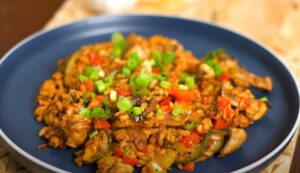I remember when I was a kid, I’d always choose my food based on its appearance. And that habit has stuck with me throughout my whole life (and I know I’m not the only one, am I right?). That’s why I try to make my home-cooked meals look as appealing as possible. It took me some time to learn the key principles of plating, but it was totally worth it!
Are you ready to make restaurant-quality meals right in your own kitchen? With the right techniques, you can create beautiful plates like a professional chef! Today I’ll share tips and tricks that will help you plate dishes like a pro. So grab your favorite ingredients and get ready to impress your friends!
How to Design Your Plate?
Essential Tools
You’ll need:
- A sturdy platter or plate in a neutral color that won’t overpower your dish’s visual appeal,
- Contrasting colored accents, like ramekins for sauces and bowls for soup garnishes,
- Small spoons and tasting forks for adding toppings,
- Small tongs for placing vegetables or other ingredients on top of platted dishes,
- Narrow brushes for adding glazes or coatings,
- Tweezers or chopsticks for precise placement of any small ingredient,
- Piping bags to pipe sauces onto plates if desired,
- Cooked starches such as potatoes, noodles, or rice, used as a base layer or filing between ingredients,
- A variety of herbs and edible flowers are used both as garnishes and to provide flavor.
Principles

- When designing plates, consider the color of different foods in each dish. This is one way to achieve contrast and help enhance the presentation. Aim for a balance among warm colors such as yellow, red or orange, cool colors like blue and green, and neutral tones such as white or black.
- Enhance this contrast further with texture – use crunchy ingredients like nuts or seeds along with smooth sauces or other soft elements.
- The size of each item also helps create eye-catching arrangements on plates. To make sure all components are properly showcased, aim for items no longer than three inches in length; taller items such as mushrooms can stand taller compared to others in order to make an impact. Consider using smaller items like edible flowers and herbs to add further detail.
- Group elements together according to their purpose – this may involve separating savory dishes from sweet ones or creating clusters out of smaller components such as sides or garnishes.
- Finally, think about how each element is placed on the plate – whether asymmetrically balanced or circled around a centerpiece dish – this will help bring focus onto key points within your creation.
Don’t be afraid to try something new by mixing shapes, contrasting textures, playing with depth and adding extra touches – these will ensure each plate looks just right before it reaches the dinner table!
Types of Plating
Classic

Classic plating is based on symmetry and balance, where the focus lies on creating neat lines, swirls, and other artistic elements on the plate. It aims to show off each component of the meal by layering ingredients for an orderly display.
Abstract
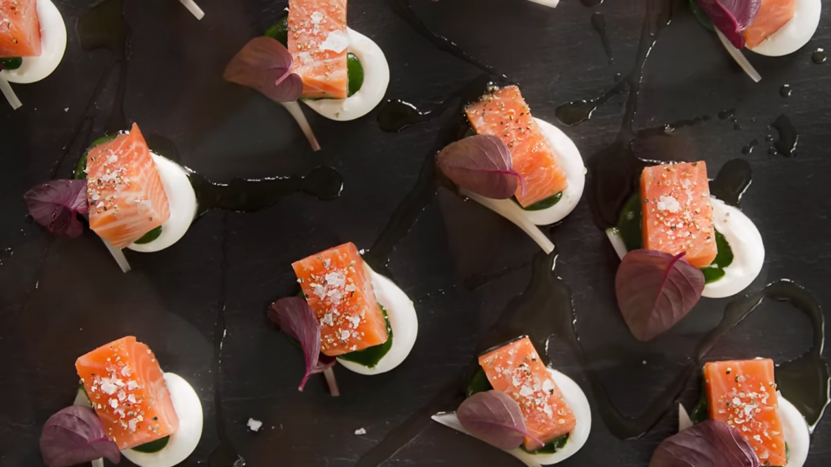
Abstract plating puts emphasis on creating flow from one side of the plate to another via shapes such as arcs, circles, or lines. It is meant to be informal but still elegant at the same time. Ingredients are often clustered in one area for contrast against a larger single ingredient or garnish in other areas.
Nouvelle Cuisine
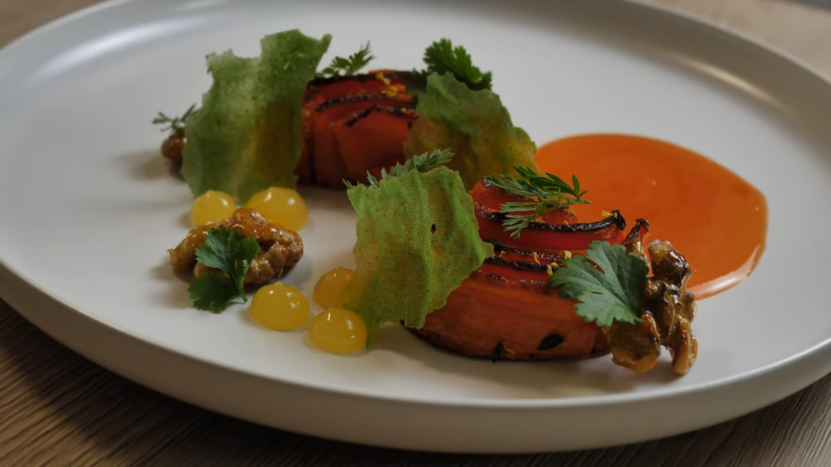
Nouvelle cuisine takes classic and abstract styles and mixes them up with bold colors and unexpected combos. It’s like art you can eat – very Instagram-worthy.
Family Style
Then there’s family style, where big platters of food are passed around so everyone can dig in together.
Family-style meals feature several individual dishes placed in excess amounts onto large plates or serving dishes which are meant to be circulated around the table with each diner helping themselves before passing it along to their neighbor or family member so they may do the same. These are great for game days and parties with lots of people!
Plating Techniques

Knowing which techniques to use when and why can help you create culinary masterpieces. Here are some of the plating techniques you should know:
Mound
A mound is quite simply a mound or pile of food placed in the center of a plate and then shaped into an attractive form – often circular. It is traditionally used for items such as mashed potatoes, risotto, polenta, or charcuterie. This can be complemented with elements like edible flowers, herbs or sauces drizzled on top for decoration.
When serving ribs, consider alternative sauces such as honey mustard glaze or tangy pineapple salsa to accompany the dish.
Swipe
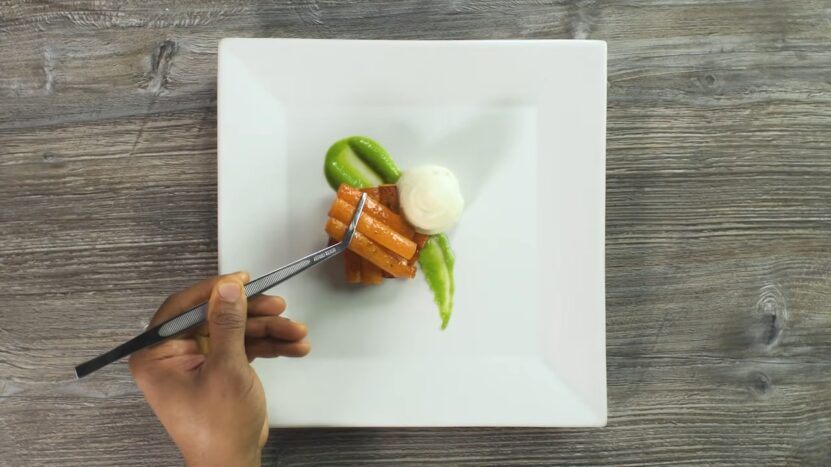
Swiping is used to create stunning background visuals that will make the presentation pop. Typically you’ll use sauces like vinaigrette or Hollandaise indoors and across the plate diagonally or in horizontal lines.
You can also use this technique to accentuate or highlight your protein or vegetable by transforming it into an interesting pattern that draws attention from far away.
Forking & Sprinkling
This straightforward technique involves forking ingredients back and forth into your food item such as seafood onto rice with a fork before sprinkling chopped herbs over the top – not only does this add even more flavor but also enhances its aesthetic appeal. It’s great for adding visual texture whilst keeping things relatively simple on the plate!
Fan Spray
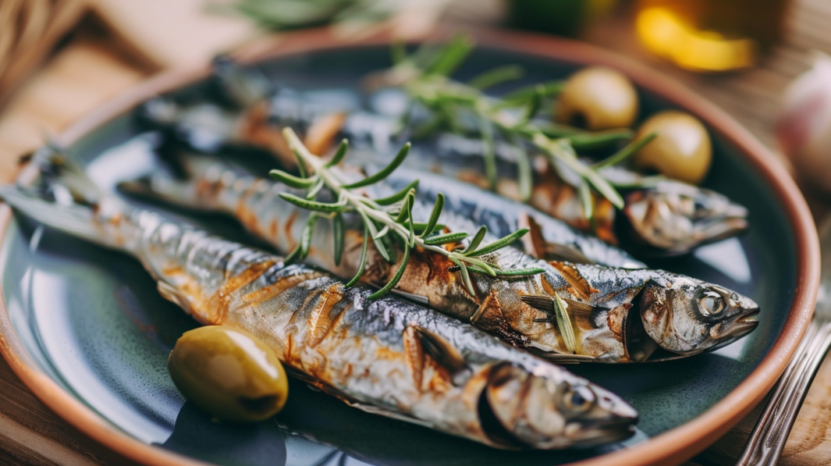
If you’re looking to add a unique touch to your dishes, fan spray may be just what you need! It entails fanning out ingredients around a centerpiece such as olives alongside fish or nuts sprinkled around mushrooms but always keeping them in equal spaces so everything looks perfectly symmetrical when served!
For an exquisite seafood twist, consider including shrimp shells artfully arranged to complement the overall presentation.
Layering
This involves arranging individual ingredients as well as elements such as sauces on plates using spoons, spatulas, tweezers and tongs – making sure everything looks nice and even before serving it up! Whether it’s colorful vegetables over rice or fresh tuna sashimi atop spicy slaw there’s no wrong way to layer foods when creating stunning culinary presentations at home!
Some Extra Tips
Use Odd Numbers
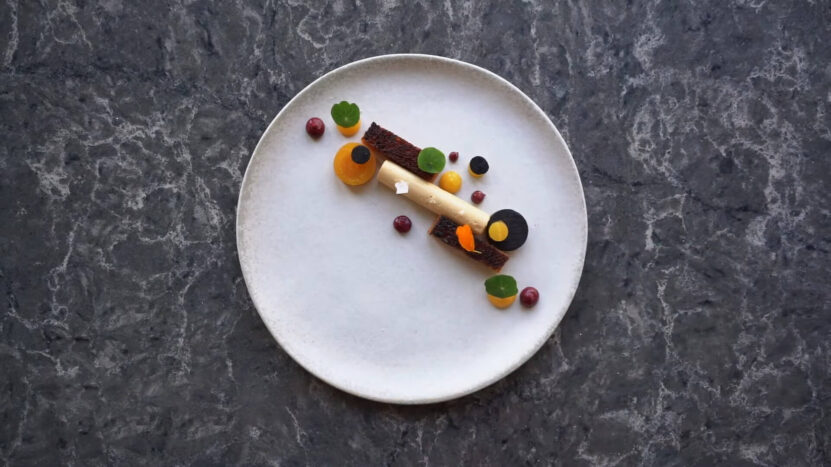
Even numbers look strange on a plate, so when you’re arranging a dish with elements like clams or scallops, opt for five or seven, rather than four or six.
Plate for The Senses
A plate has to look great, but don’t forget about the role that texture, smell, and touch all play in eating food. Try to balance all of these elements when creating and plating food. As you plate, step back and look at the big picture and how each element of the dish complements the other elements.
Create an interesting flavor experience by adding several elements of textures and tastes on each plate. Consider adding crunchy croutons over a smooth purée, and salty anchovies over sweet natural peanut butter – endless possibilities!
Choose a White Plate
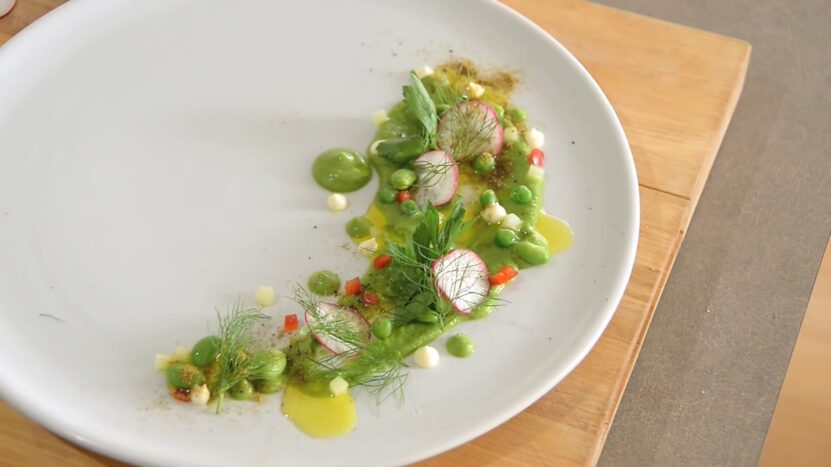
When it comes to choosing plates, plain white is really the way to go. It makes all your food colors just pop right off the plate. Everything will look so fresh and vibrant. The white background is like a blank canvas – it lets each ingredient shine without any distractions. Prints or patterns on the plate take attention away from the food.
Also, make sure to pick plates that fit your portions well. You don’t want oversized plates making your servings look tiny! And leave enough room to really showcase your presentation in a creative way.
Determine Your Focal Point
Every dish needs a focal point, and you can then plate it in a way that helps that focal point to stand out. Usually, your focal point is the protein, and other elements, like the sides, can be arranged to frame or draw attention to that protein.
So when you’re arranging everything on the plate, think about how to highlight that main attraction. Try framing it with your sides or positioning them in a way that guides the eyes right to that protein.
Go for Height
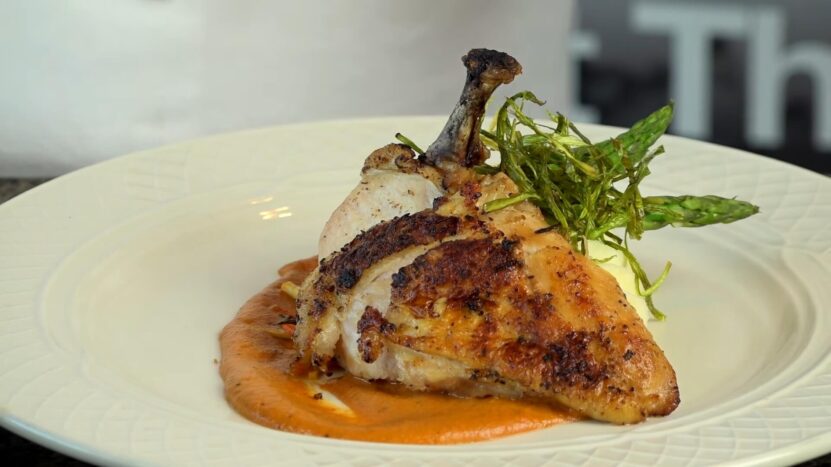
The height of a dish will help draw attention to the focal point, so think about ways that you can build up the height as you’re plating. Just make sure not to cover it up or lose it in a big pile of sides!
Mold Your Mains
It’s best when you let guests do some assembly at the table like stacking tartines or tacos.
However, if you are cooking vegan burgers or meatballs then it’s best that you give them shape before serving – this will not only make them easier to handle but it’ll also create an appetizing effect when stacked on one side of the plate with some garnish freshly slipping over its peaks due to gravitational pull!
For a delightful dessert option, consider pairing these savory dishes with homemade vegan Bounty Bars, adding a sweet contrast to your meal.
Choose Your Garnish Carefully
When you’re decorating the plate, only use stuff that actually adds to the flavor. Don’t just throw random herbs or whatever on there. It’s gotta mesh taste-wise with what you cooked, you dig?
Stick to garnishes that were already in the recipe. That way it was meant to blend together from the jump.
Last but Not Least, Get Creative!
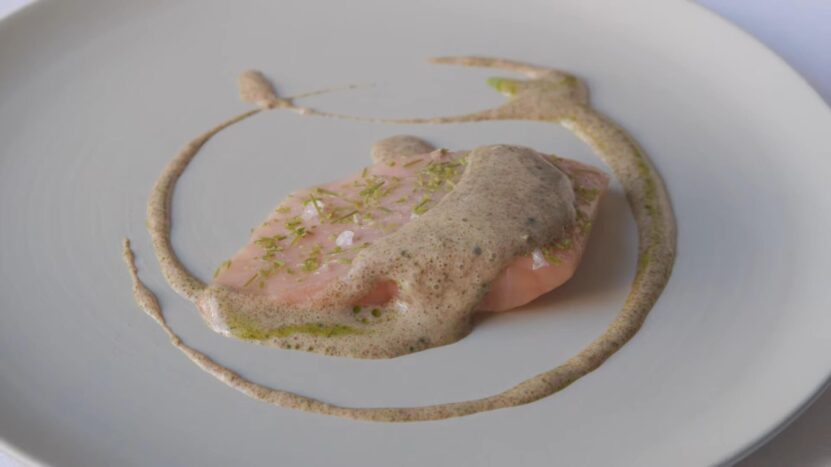
While plain white plates always look clean, sometimes it’s fun to switch it up, you feel me? Think outside the box! Serve things on a cutting board, a slate, even a dope cheese platter.
Just make sure your colors complement each other. Each component’s color should help bring out the other elements in that plate; for instance, green pesto sauce over roasted vegetables would look great because its intense reds will pop through when combined together.
Pay Attention To…
Contrast
Play around with bright, vibrant shades to really make each item pop. Make sure everything stands out on its own but also looks dope together as a whole meal.
Combination of Shapes and Sizes
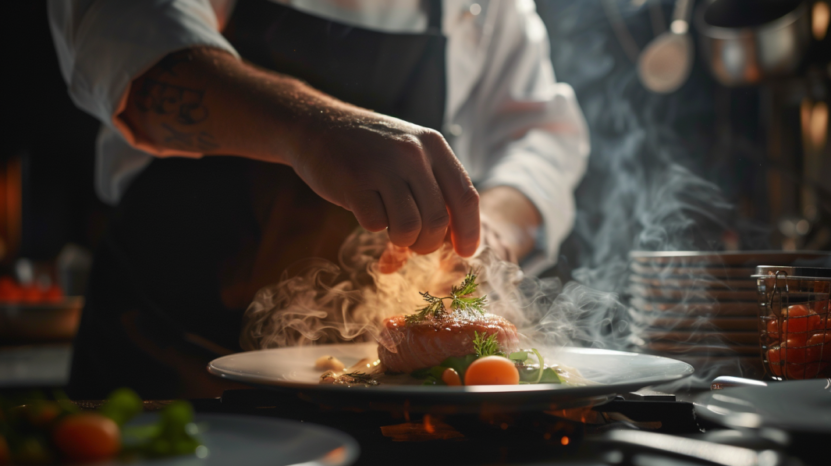
Mix different shapes and sizes. Serve some things on rounds, some in bowls, some longways – keeps it interesting to look at. Just don’t let the dishes overshadow the food.
Proportion
Portion control is clutch too. Too much piled on and nothing really shines through. Leave some breathing room so each ingredient can be the star.
Texture
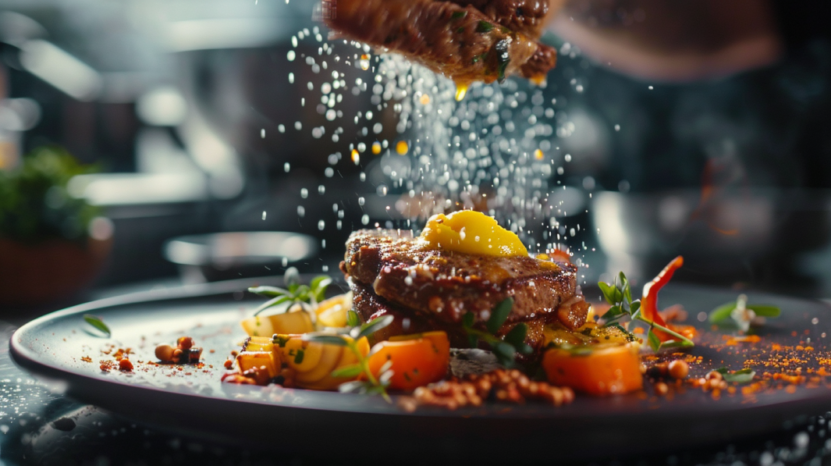
Flat can be boring – add some height with chips, piles, or mounds. So try adding elements that add dimensionality like tiles or vegetable chips for height and size contrast, sliced fruit for added color pops, shredded cheese for texture playfulness, etc.
Color Palette & Efficiency
Finally, plan your color scheme wisely. Pick a monotone palette or colors that flow. It’ll make your courses look cohesive AND you can reuse ingredients to save dough. Efficiency on point!
FAQs
When it comes down to it, taking the time to artfully display your food isn’t just for looks. Proper presentation actually brings out the best flavors in everything you cook. And becoming a plating pro ain’t as hard as it seems.
With some practice following these fundamentals we talked about, I know you guys can level up your skills in no time. Just keep playing around in the kitchen and don’t be afraid to get creative.
If you enjoy playing with your food as much as eating it, then you’re sure to find something enjoyable and rewarding in mastering these tips. For more interesting topics and useful tips, check our website.

Hi hi! My name is Mavy, I’m a 35 year pastry chef who specializes in everything and anything sweet! I like to challenge myself by decorating all kinds of cakes and creating all sorts of unique cookie flavors.

